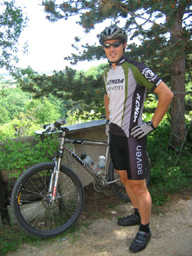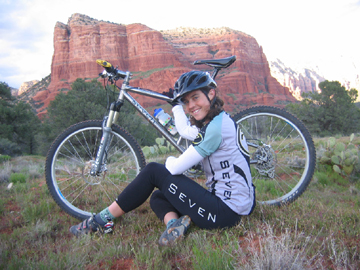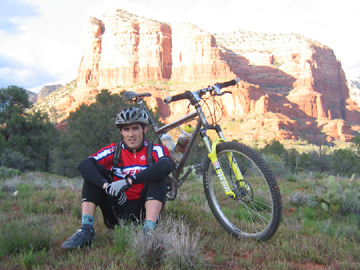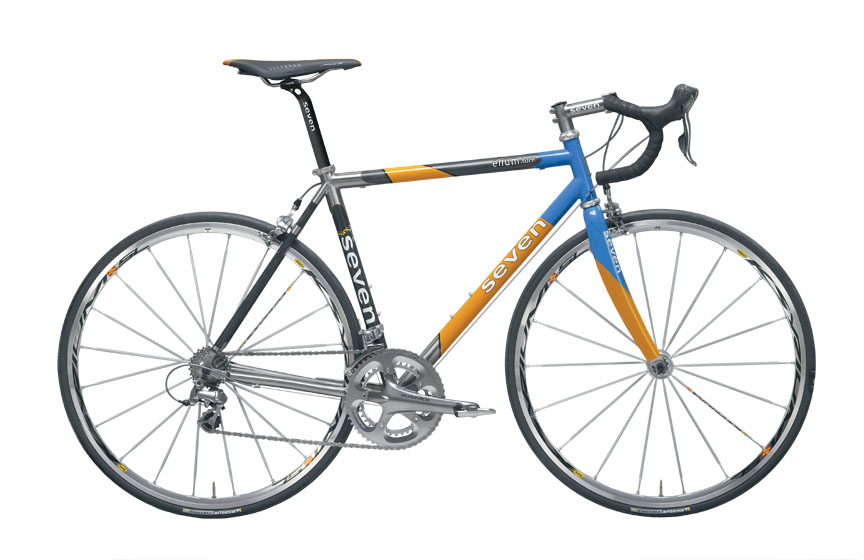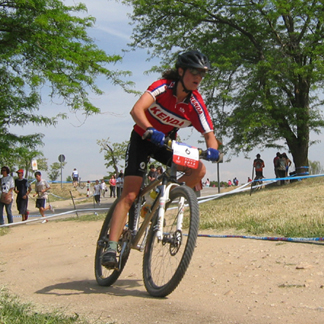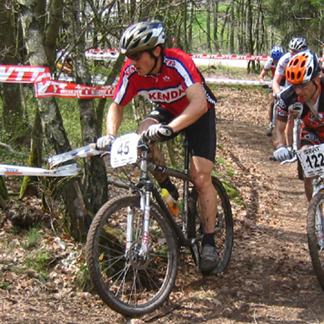by Roch Frey/Multisports.com
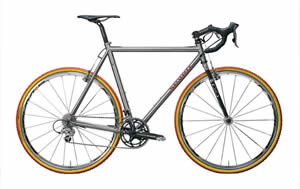
You’ve ridden every road within a 50-mile radius of your home so many times you know every crack in the pavement. Does the mere thought of doing the same old rides make you nauseous?
Are you starting to see the dirt roads along the way and wonder where they go as you fantasize about hills not yet climbed and rednecks not yet encountered? Granted, some of you are so obsessed with specificity of training (and not getting dirty) that you’ve never considered anything beyond two skinny tires and smooth tarmac. But if you are starting to feel bored to tears by routes that were once exciting, it’s time for you to “cross” over.
Many triathletes own a mountain bike and in the off-season — or very early season — they actually use it, but only if it’s not too close to their sacred triathlon season. There seems to be an underlying assumption that it’s OK to go off-road, but only if it’s not during serious training time.
“No sir, we sure don’t want mountain bike riding to ruin the upcoming tri-season! What if we’re not on our aerobars by January? Maybe we’ll grow hair on our legs and start enjoying a little dirt coating on our two front teeth. Maybe we’ll start laughing during rides and forget to wear our heart rate monitor (the horror)! Surely, we’ll miss out on some crucial neuromuscular development.”
Wrong!
The perfect alternative
Mountain biking is a perfect alternative to your rides on the road and is good for your head — not to mention those bike-handling skills. Have you ever stood on a corner at an Ironman race and watched the participants try to negotiate a 90-degree turn on their bikes?
If NASCAR fans only knew how close a crash was to happening 2,000 times at any Ironman bike course turn (4,000 times for a two-loop course), they’d leave their television sets and set up bleachers and a beer tent. Memo to all of you: When going around a corner, keep your inside pedal (the one closest to the apex of the turn) up! Phew! You’re scaring me to death.
“But,” you say, “I don’t like fat tires. They go too slow and I don’t need the suspension because I’m not going to risk crashing on technical, rooty, rocky terrain. I want something I can cover some ground on. I’m sticking to graded dirt roads.”
Meet the bike
Funny you should bring that up, because have I got the bike for you: Meet the cyclocross bike, or ‘cross bike or CX as it’s sometimes called. You’ve probably seen one — you know, it looks like a standard road bike but with fatter tires and those funky center pull brakes.
Cyclocross racing is enjoying some healthy growth and CX bikes are back in the limelight. The racing is fun, but, more importantly, this is a bike that can go anywhere, anytime, in any conditions. It’s the perfect addition to a triathlete’s two-wheeled arsenal.
You’re thinking, ‘OK, Roch. You explain to my people (family, spouse, etc.) that I need to purchase yet another bike. I can barely get an entry fee without a General Accounting Office fact-finding mission. Now I’m going to get another bike? You could have told me about this before Christmas!’
The fact is you’re going to ride this bike all year long — not just in the off-season — and you do have a birthday coming up, don’t you?
Again, this isn’t just about riding off-road for a change of pace and then, once the pre-season arrives, going back to the tri-bike full time.
Riding once a week on your tri-bike is an important early season practice. It will allow you to gradually adapt to the flexibility needed for the aero position and the specific recruitment of time-trialing muscle groups. If you’re set up well on your ‘cross bike there’s no reason you can’t use it for all other rides.
Then, once the race season arrives, 90 percent of your rides should be back on your tri bike for the training specificity of the aero position. That still leaves you one ride each week where you can swap out the aero bars and road rage for the peace and quiet of those exploratory backcountry rides on your ‘cross bike.
This is also a great way to justify the purchase of a new bike as you will use it year-round, and it offers the ideal mental break from the normal road cycling training grind. “Honey, it’s a justifiable expenditure. I need it. Roch said.” Leave that last part out; but the rest should work.
Is a ‘cross bike truly as good as riding a road or tri bike on the road? Let’s see. The fatter tires give you some bite and suspension when off-road, but once they’re back on the pavement they roll almost as fast as the skinny 19-22-millimeter tires on road bikes.
This is the key: you don’t feel as if you are sacrificing your fitness on a ‘cross bike, yet you still have the ability to head off-road and liven up your training. Riding on rough or dirt/gravel roads also builds bike-handling skills.
Improve your handling skills
Most triathletes (yes, even you) get into the sport of triathlon without first developing cornering, descending and braking skills — not to mention bike etiquette such as holding your line, pointing out debris and obstacles in a group, etc. Hitting the dirt forces you to build technical proficiency. This is true of mountain biking, too, but the trails may be intimidating to beginners and even some veteran triathletes.
Yes, one could use a mountain bike on the rolling backcountry gravel roads, but again, the thought, “It doesn’t feel like my tri bike, therefore it must not be doing me any good” tends to wander into the mind of the obsessive, compulsive, I-have-to-be-going-at-least-18-mph triathlete. Of course, it’s not true, but on a ‘cross bike you don’t tend to have this thought.
A little too cold outside to hit the road? Take the ‘cross bike out and hit the trails. Your speed will be slower than on the roads, reducing the wind chill and allowing you to last longer and feel like you are getting a “more specific” training session.
Peter Reid has been using his ‘cross bike for years. “From March to September I ride it once a week,” Reid says. “I do this awesome 100-mile loop all on fire roads. Riding those roads really makes me strong due to the constant rolling resistance. You never seem to get a break. Right now my ‘cross bike is converted to a full-on winter bike. It weighs a bit more but I can put some major fenders on it compared to a tri or standard road bike.”
Aside from building bike-handling skills and affording you the joy of getting on some dirt, you can also use the ‘cross bike on pavement in the rain, as its bigger tires give you more traction. You also save your beloved tri bike and its fancy components from the bad weather.
Change is good. While training should be specific, the key to longevity in any sport is variety. Throwing in some ‘cross riding year-round will keep you fresh mentally and add some fun to your cycling. Come July, it’s been five or six months of toiling on the tri bike and suddenly you find that those long Saturday rides are not as inviting.
Switch it up! Get the ‘cross bike out and ride a completely different loop. Before you know it, you’ll find yourself riding around a muddy circuit in November, dismounting and mounting your trusty steed in one smooth motion like a seasoned Euro, and you’ll wonder why you were so hesitant to try a ‘cross bike.
You know what they say? Once you’ve ‘crossed over you’ll never go back.
Roch Frey coaches all levels and ages of multi-sport athletes from beginner to professional athletes including Heather Fuhr, 1997 Ironman Hawaii Champion and Peter Reid, 1998 and 2000 Ironman Hawaii Champion.

